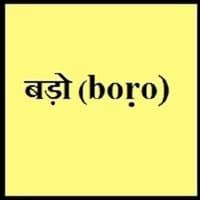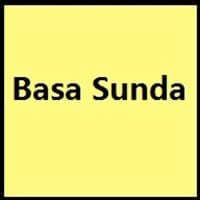Bodo and Sundanese
Countries
Assam, India
West Java
National Language
Assam, India
Indonesia
Second Language
Not Available
Not spoken in any of the countries
Speaking Continents
Asia
Asia
Minority Language
Not Available
Not spoken in any of the countries
Regulated By
Not Available
Not Available
Interesting Facts
- In ancient times, Bodo language was written using Assamese script and Roman script.
- Bodo Language is written using Devanagari script since 1963.
- The Sundanese language is second most widely spoken regional language in Indonesia.
Similar To
Dimasa language, Garo language, Kokborok language
Madurese and Malay Languages
Derived From
Not Available
Not Available
Alphabets in
Bodo-Alphabets.jpg#200
Sundanese-Alphabets.jpg#200
Scripts
Devanagari
Latin, Sundanese
Writing Direction
Not Available
Left-To-Right, Horizontal
Thank You
Not Available
Nuhun
How Are You?
Nungni khabora ma?
Kumaha kabarna?
Good Night
मोजां हर (Mwjang Hor)
Wilujeng kulem
Good Evening
Not Available
Wilujeng wengi
Good Afternoon
Not Available
Wilujeng siang
Good Morning
मोजां फुं (Mwjang Fung)
Wilujeng énjing
Please
अननानै (Onnanwi)
Mangga
Sorry
Not Available
Hapunten
Bye
Not Available
Wilujeng angkat
I Love You
अननाइ नों (onnai Nwng)
Abdi bogoh ka anjeun
Excuse Me
Not Available
Punten
Dialect 1
(Sønabari) Western Boro dialect
Western dialect
Where They Speak
Bongaigaon, Kokrajhar
Banten
Dialect 2
(Sanzari) Eastern Boro dialect
Northern dialect
Where They Speak
Barpeta, Darrang, Kamrup, Nalbari
Bogor
Dialect 3
(Hazari) Southern Boro dialect
Priangan dialect
Where They Speak
Assam, India, Nepal
Bandung
Speaking Population
Not Available
Native Name
बड़ो (boṛo)
Not Available
Alternative Names
Bara, Bodi, Boro, Boroni, Kachari, Mech, Meche, Mechi, Meci
Priangan, Sunda
French Name
Not Available
soundanais
German Name
Not Available
Sundanesisch
Pronunciation
[bɔɽo]
Not Available
Ethnicity
Bodo, Mech, (Assamese)
Sundanese, Bantenese, Cirebonese, Badui
Origin
1913
5th century AD
Language Family
Sino-Tibetan Family
Austronesian Family
Subgroup
Tibeto-Burman
Indonesian
Branch
Not Available
Not Available
Early Forms
Not Available
No early forms
Standard Forms
Not Available
Sundanese
Signed Forms
Not Available
Not Available
Scope
Individual
Individual
ISO 639 1
Not Available
su
ISO 639 2/T
Not Available
sun
ISO 639 2/B
Not Available
sun
ISO 639 6
Not Available
Not Available
Glottocode
bodo1269
sund1251
Linguasphere
Not Available
No data available
Language Type
Living
Living
Language Linguistic Typology
Not Available
Subject-Verb-Object
Language Morphological Typology
Not Available
Not Available
All Bodo and Sundanese Dialects
Most languages have dialects where each dialect differ from other dialect with respect to grammar and vocabulary. Here you will get to know all Bodo and Sundanese dialects. Various dialects of Bodo and Sundanese language differ in their pronunciations and words. Dialects of Bodo are spoken in different Bodo Speaking Countries whereas Sundanese Dialects are spoken in different Sundanese speaking countries. Also the number of people speaking Bodo vs Sundanese Dialects varies from few thousands to many millions. Some of the Bodo dialects include: (Sønabari) Western Boro dialect, (Sanzari) Eastern Boro dialect. Sundanese dialects include: Western dialect , Northern dialect. Also learn about dialects in South American Languages and North American Languages.
Bodo and Sundanese Speaking population
Bodo and Sundanese speaking population is one of the factors based on which Bodo and Sundanese languages can be compared. The total count of Bodo and Sundanese Speaking population in percentage is also given. The percentage of people speaking Bodo language is Not Available whereas the percentage of people speaking Sundanese language is 0.57 %. When we compare the speaking population of any two languages we get to know which of two languages is more popular. Find more details about how many people speak Bodo and Sundanese on Bodo vs Sundanese where you will get native speakers, speaking population in percentage and native names.
Bodo and Sundanese Language Codes
Bodo and Sundanese language codes are used in those applications where using language names are tedious. Bodo and Sundanese Language Codes include all the international language codes, glottocodes and linguasphere.





